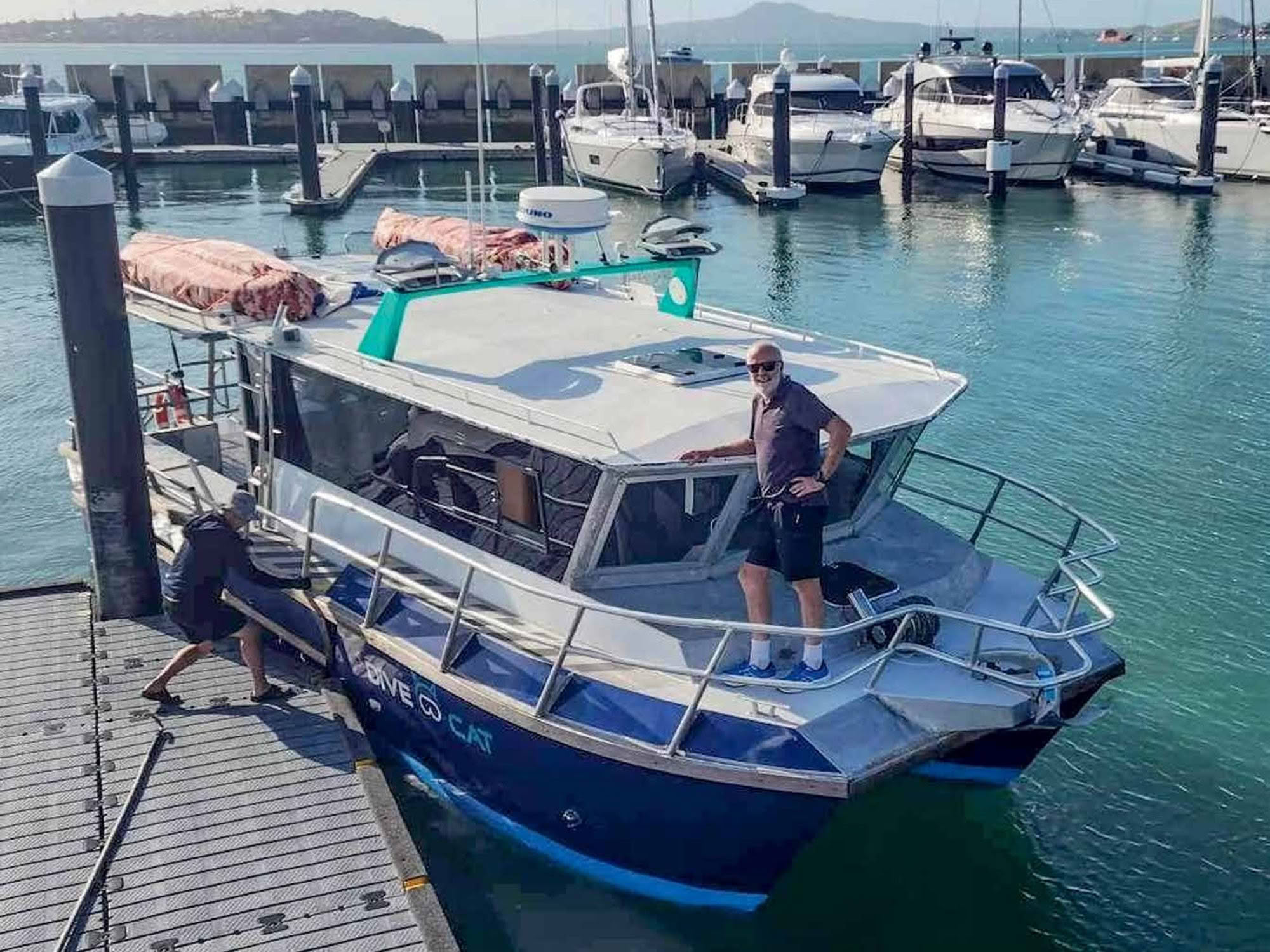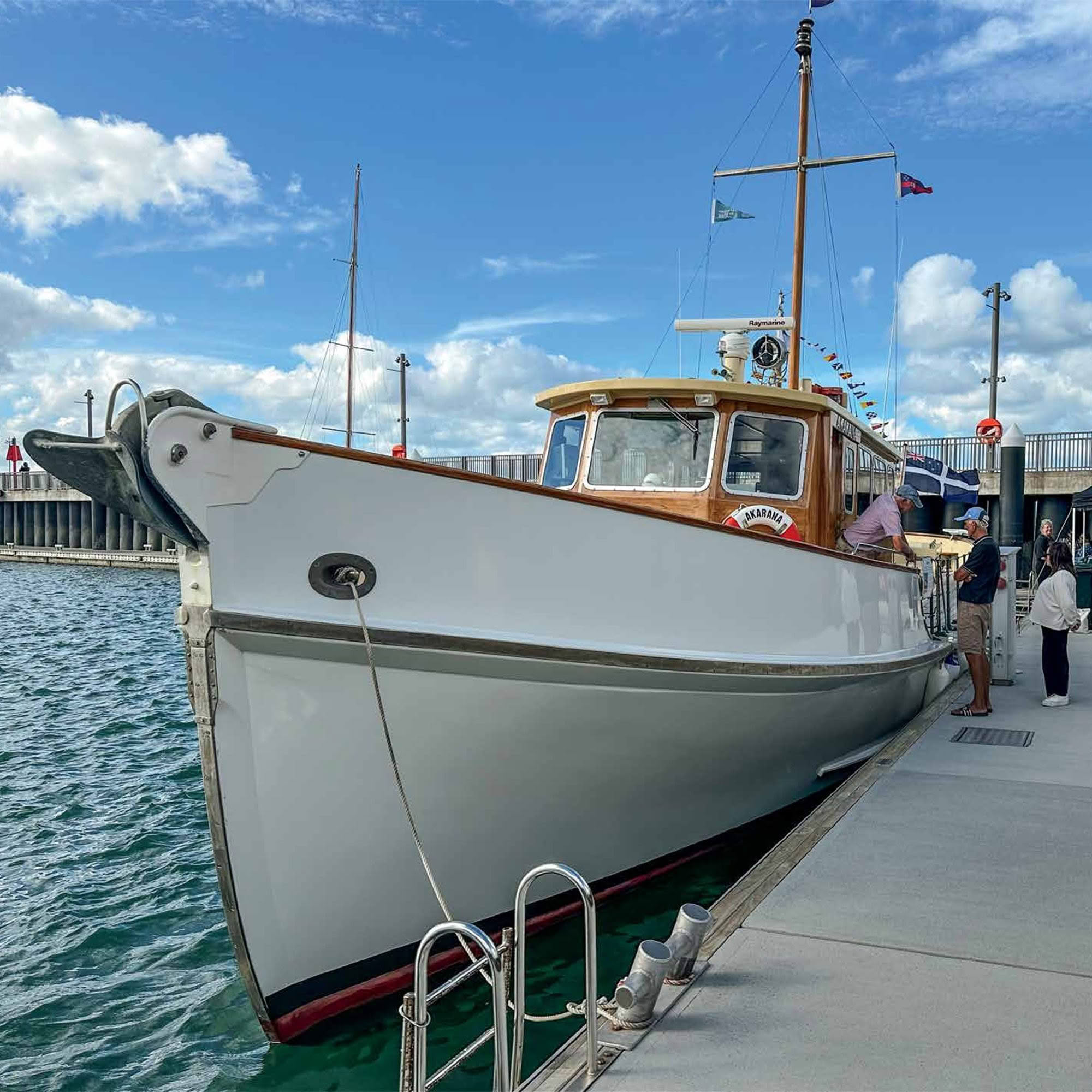

What a shocking end to our summer! We never saw this plot twister coming!
As we’ve previously written, our long-time goal is to sail to the Pacific Islands midway through this year. Progress has been inhibited by working in Cambridge Monday to Saturday each week, allowing us only Sunday to work on projects to get S.V. Sauvage, our 47-foot Jeanneau, CAT 1 ready. Not to be thwarted, we put our house on the market in November last year, and then – hurrah – after a few nervous open homes and private viewings, we went unconditional earlier this year. As I write, the move out date is in 19 days, towards the end of March. With the sale of our house, our dream of Pacific Island hopping became one step closer!
There is much to do to be ready for such a long sail, so we set our priorities; having fresh water onboard is by far one of our highest. Our water maker, which is not so old, but is now a little outdated, has been the centre of my displeasure for quite some time. It’s the type that requires a high-pressure motor (220V) fed by a 12V pump pushing seawater from the seacock; it is very loud, and plain cumbersome to use. It is, however, the one we have, and the one we expect to use for the foreseeable future.


My umbrage is born from a lack of communication and follow-through from its manufacturer, but that is a separate discussion. Having a functioning water maker has been a continuous work in progress, and over summer I put more effort into it and it is now working well. As space in the galley is at a premium – too premium for our water maker to live in – it has now been assigned to the engine compartment.
In its galley location, it leveraged off the seawater throughhull opening used for the galley’s seawater tap. I had previously identified an alternative seawater through-hull opening in the engine compartment, so I removed the high-pressure motor from the galley, disconnecting and removing all the filters and hoses. In the process, and unbeknown to me, the old and weathered seawater tap under the galley sink cracked when I removed its connected hose and the tap started to leak water.
We quickly found the spare bungs for the through-holes located on the underside of Sauvage while Kirsten mopped up the drips and tried to stem the leak’s unwavering trickle. Meanwhile, Chris (Jnr) and I jumped in the river to bung the hole. Of course, the bung was not the correct size, so as we held on to the tender and boat lines to stop ourselves from being carried away by the current, we whittled and sanded the bung until it was the size we needed. After 15 frenzied minutes, we succeeded in bunging the hole and the trickle finally abated.
It was pretty jolly windy – 20 knots gusting 40 – and the river valley creates a wind funnel. Just at that moment, a strong gust of wind caught my shorts, which I’d quickly cast aside on the deck before jumping into the water in my undies, and flung them into the river. Chris (Jnr) jumped into the tender in a valiant effort to find them, but alas, they drowned before they could be saved. Okay, so it’s not such a big deal – I had other shorts to wear– but I was still annoyed!


After a little hole-now-bunged celebratory rest, I removed the RO filter, which is quite long, from the cupboard in Neve’s cabin, which had the added benefit of providing more storage space for clothes. On my next visit, I planned to place the filter in the engine bay, but in the meantime, it was time to depart for Cambridge. That was until I suddenly realised that the car keys and my bank cards had all been in the pocket of my now very-drowned, never-to-be-foundagain shorts. And that wouldn’t have been so bad if it hadn’t been our one-and-only car key languishing somewhere at the bottom of Whangamata Harbour. Doh!
And so began a long odyssey to replace the car key. It was no easy feat, but a week later we had a replacement and by Sunday we were visiting Sauvage again, moving forward with relocating the water maker in the engine bay.
To get into the engine compartment, I either have to carefully descend from the cockpit (the basin below the cockpit floorboards is removable) or slide in sideways from the aft cabins. Given the length of the water maker’s RO filter, I thought it prudent to come in from the top. With the help of the boys, I was able to fit the RO filter inside the cavity on two wooden supports I’d epoxied to the bulkheads earlier, one at each side of the compartment wall. I was feeling pleased – progress was being made and I could see how it would all work. But I needed to leave the epoxied supports to set further, so I planned to return to Sauvage on Wednesday.

So, come Wednesday, and Chris (Jnr) and I returned to Sauvage with my Dad, to keep working on the water maker project. I was excited – today I would see the end of the project, and a working water maker! After a bit of a chat with Dad up in the cockpit area, Chris (Jnr) and I opened companionway door to step down into Sauvage. Oh…. NOOOOOOOO!
There, above where our floor should have been, sat at least 12cm of seawater; the floorboards themselves now floating on top of the internal sea. Trying not to panic, I first reset the circuit breakers which had popped. I then turned on the bilge pump which had been running but stopped during the night when we ran out of charge in the house batteries. Then I tracked down the source of the water ingress. Wouldn’t you know it! There, inside the motor cavity, sat yet another seawater tap [sea cock], leaking seawater and making concentric circles as it dripped into our internal sea. The only thing I can think was that I had knocked it accidentally when I was placing the RO filter on Sunday.


Within an hour the water above the floorboards was gone and the bilge was starting to empty, but there were so many nooks and crannies full of water that a week later, after nearly daily visits, we are still finding puddles.
But what a mess! Sauvage’s floors, sides, bulkheads, and cabinetry, as well as mattresses and tools, have all been damaged. It has been a heck of a clean-up job and the water has left marks and stains. Some of the wood has started to grow mould. I have been in an almost continuous conversation with the insurance assessor, working to figure out the next steps. In the meantime, Sauvage’s bilge area has never been so clean!
We were due to be starting our electronics installation about now, radar and autopilot, and other safety equipment for our journey to the Pacific Islands. That needs to go on hold. Meanwhile, the days until move out date are counting down and we have no Sauvage to move into. I’m not sure how well my nerves will tolerate the next few weeks. Find out in next month’s column! Or join our Facebook page where we will post our latest news. BNZ






